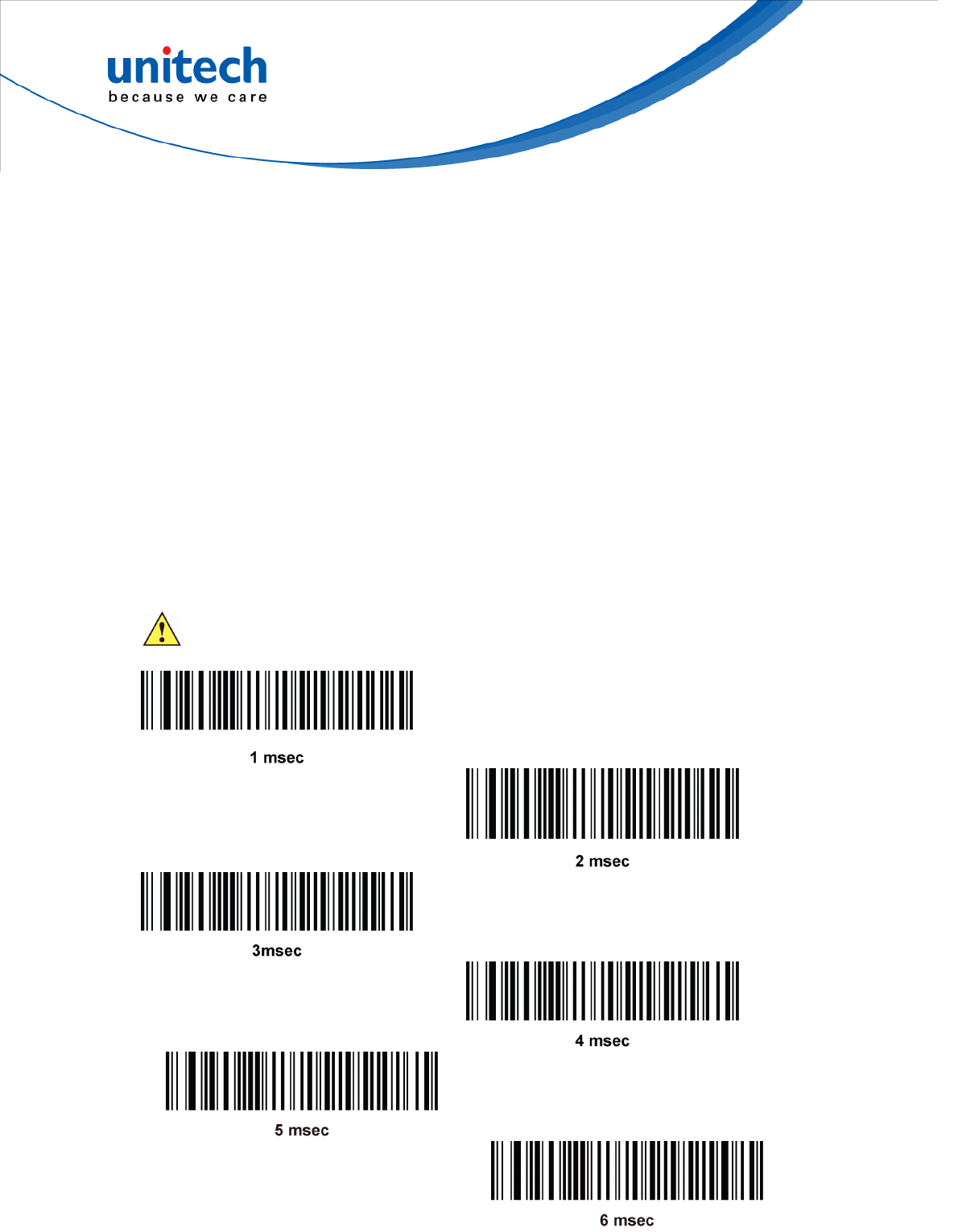User's Manual
Table Of Contents
- Preface
- About This Manual
- Table of Contents
- Chapter 1
- Introduction
- Chapter 2
- Output Data Editing
- Chapter 3
- Barcode Setup Menu
- Chapter 4
- Barcode Symbologies
- Introduction
- Symbol Code Identifiers
- UPC-A
- UPC-E
- Code 39
- UPC-E1
- EAN-13/JAN-13
- Bookland EAN
- Bookland ISBN Format
- Decode UPC/EAN/JAN Supplementals
- EAN-8/JAN-8
- Code 128
- GS1-128 (formerly UCC/EAN-128)
- ISBT 128
- Convert UPC-E to UPC-A
- Convert UPC-E1 to UPC-A
- Convert Code 39 to Code 32
- Convert I 2 of 5 to EAN-13
- Trioptic Code 39
- Discrete 2 of 5
- Interleaved 2 of 5
- Coabar
- MSI
- Inverse 1D
- Postal Code Symbologies
- Composite Symbologies
- 2D Symbologies
- PDF417
- MicroPDF417
- Code 128 Emulation
- Data Matrix
- Data Matrix Inverse
- Decode Mirror Images (Data Matrix Only)
- Maxicode
- QR Code
- QR Inverse
- MicroQR
- Aztec
- Aztec Inverse
- Redundancy Level
- Security Level
- Intercharacter Gap Size
- Macro PDF Features
- Macro PDF Transmit / Decode Mode Symbols
- Transmit Macro PDF Control Header
- Escape Characters
- Flush Macro Buffer
- Abort Macro PDF Entry
- Appendix A
- Sample Barcodes
- Appendix B
- Numeric Barcodes
- Appendix C
- ASCII Character Sets
- Appendix D
- Worldwide Support

USB Transmission Speed Parameters
Use the following parameters to speed USB data transmission:
USB Polling Interval - When using more current USB systems, use this
parameter to set a lower interval in order to increase data transmission speed.
Fast HID Keyboard - When configured as a USB HID keyboard device, use this
parameter to increase the data transmission speed of printable (7-bit) ASCII
characters.
Quick Keypad Emulation - When configured as a USB HID keyboard device,
use this parameter to increase the data transmission speed of a mix of both
printable (7-bit) and full (8-bit) ASCII characters.
Note:
Emulate Keypad and Quick Emulation override Fast HID.
USB Polling Interval
This option speeds data transmission for all USB devices except CDC. Scan a
barcode below to set the polling interval. The polling interval determines the rate at
which data can be sent between the scanner and the host computer. A lower
number indicates a faster data rate. The default value is 8 msec.
Changing the polling interval re-initializes the scanner.
CAUTION
Ensure your host machine can handle the selected data rate. Selecting
a data rate that is too fast for the host can result in lost data.
9
Copyright 2013 Unitech Electronics Co., Ltd. All rights reserved. Unitech is a registered trademark of Unitech Electronics Co., Ltd.










